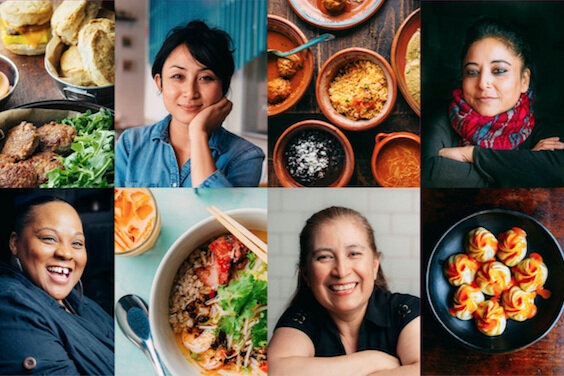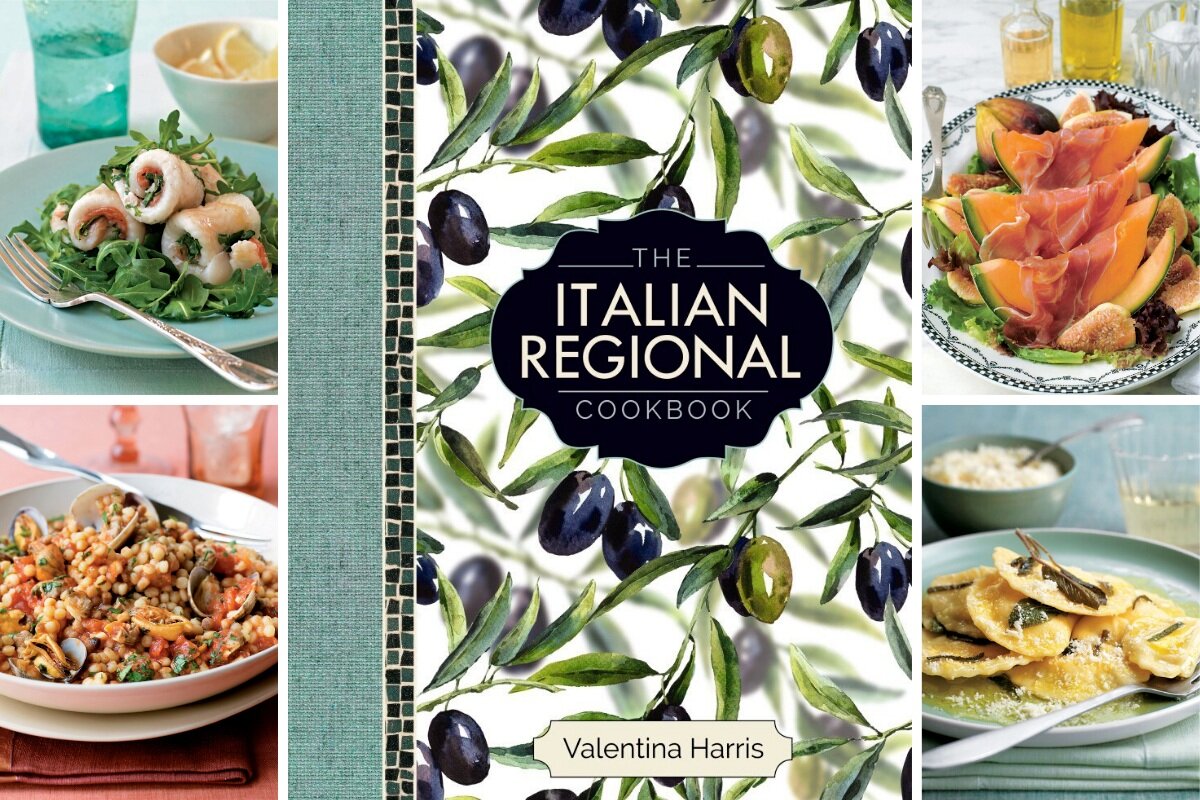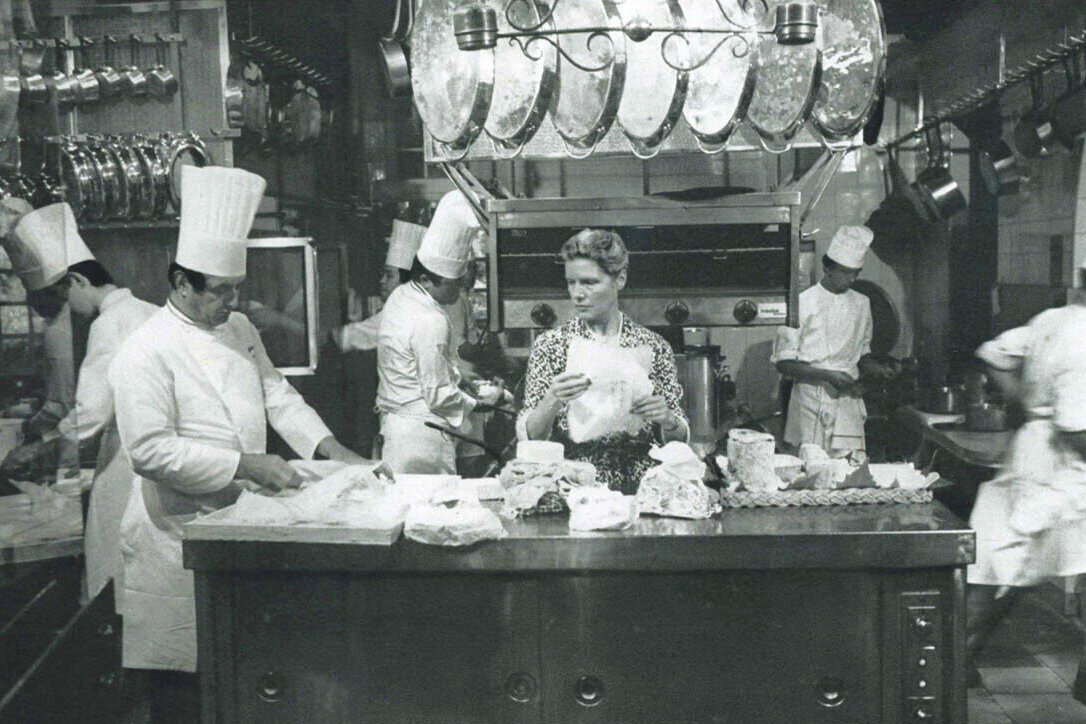Advertisement
Behind the Cookbook: Vegetables From Amaranth to Zucchini
17 August 2021 · Behind the Cookbook
Elizabeth Schneider has been described as “The Neil Armstrong of cookbook authors.” “She sets her sights on the universe beyond the supermarket produce aisle and lets the ingredients speak for themselves,” wrote the New York Times in its review of her prodigious masterwork, Vegetables from Amaranth to Zucchini, when it was published in 2001.
This whopping compendium of edible veg is much more than a mere A-Z of ingredients. It is the product of a decade of in-depth research involving Schneider’s hand-picked network of research scientists, farmers, foragers, chefs, and home cooks – painstakingly researched and written with “a poet’s lambent passion and scientist’s steely insistence on incontrovertible facts [Food Arts magazine].”
Its critical success stems in part from Schneider’s intention. Her mission in writing this book was to introduce American cooks to little-known, under-appreciated vegetables – particularly those known and loved by immigrant communities – and to expand cooks’ culinary repertoire.
Two decades on, Vegetables from Amaranth to Zucchini is at least as relevant now as it was 20 years ago – the importance of eating a wide variety of fresh vegetables is stronger than ever. In a piece written exclusively for ckbk, the author reflects on how much – and how little – the food world has changed since the book’s publication.
‘Vegetable Discoveries,’ my original title for this book, was rejected by the publisher. But it captures the spirit of adventure I felt embarking on a quest to demystify the vegetables that were arriving in the United States with its newest immigrants. In addition to these exotics, I also wanted to unearth and shed light on old varieties of plants that had fallen out of use in the US but were still well-loved elsewhere.
Thomas Jefferson wrote, “the greatest service which can be rendered any country is to add a useful plant to its culture,” and I wanted to help make this happen! I saw myself as a crusader, introducing vegetables from other cultures and eras into the United States. I hoped to speed up the process of their assimilation by studying them closely and finding ways to make them appealing and useful to a wide American audience.
Vegetables: “the roots of a community”
Part of the reason that I was able to undertake this investigation is because I live in Manhattan, a short subway ride from Queens, where the most diverse population in the United States resides. In the 1990s, when I began research, it was represented by at least 167 nationalities and 116 languages – and its markets displayed more than this number of vegetables combined. With the help of my husband, who acted as burro and buffer, we braved this alien territory to bring home vegetables to test and retest, while Amos Chan meticulously and artfully photographed our weekly haul.
These trips to primarily Asian and Latin markets were the starting ground. There I was, a woman of the ‘wrong’ nationality, poking my nose into others’ traditional fare and being met with dubious stares. But I soon realized that I knew enough about the food of ‘other’ cultures to ask good and serious questions.

“Succulent and mellow, with subtle suggestions of eggplant, artichoke, and asparagus” – Elizabeth Schneider describes okra. Photo: Amos Chan
To my delight, shopkeepers and passing customers opened their minds and hearts to me – as did food lovers of all stripes. I learned that when people talk about their vegetables, they also reveal intimate and touching details about their lands of origin, their social habits, their religious practices, their marriages, their children and grandparents – all that they hold close. Vegetables and fruits point us to the roots of a community; they remind us that culture is contained in agriculture.
From there I branched out, developing an informal international network of multidisciplinary participants. For nearly a decade I corresponded by mail, telephone, and fax (this was before the internet!) with research scientists, farmers, foragers, produce distributors, chefs, food writers, and generations of home cooks. While I was the fortunate conduit, we all learned from each other.
It was a fascinating and enlightening journey. Together we created a reference work that fairly represents some 350 common and exotic individuals, each one a vegetable worthy of examination or re-examination, and of inclusion in the American diet.

Schneider on ramps: “These native American leeks arrive in sophisticated city shops with the first garlicky breath of spring.” Photo: Amos Chan
A book for curious cooks
Judging from my present vantage point, my grandiose mission to introduce as many vegetables as possible to as many people as possible has failed. The vegetable newcomers have not become standard fare in our markets, nor have many tasty old-fashioned vegetables been re-welcomed. Sad to say, the quality and diversity of the general marketplace, represented largely by supermarket chains, diminished over the four decades that I wrote about food.
There are, however, farmers’ markets and shops in ethnic enclaves where small-scale and unusual crops are appreciated. I still believe ardently in the healthful benefits and culinary pleasures that a varied plant vocabulary offers – as well as in the significant peace-making potential of cross-cultural sharing.
If you are a curious cook who goes foraging in these places, adventures await you in the rewards of diverse communities of people and foodstuffs. Vegetables from Amaranth to Zucchini will help you understand and enjoy these today – as it did 20 years ago.
Reviews of Vegetables from Amaranth to Zucchini
“With this month’s publication by William Morrow of Vegetables from Amaranth to Zucchini, a radiantly photographed 832-page encyclopedia-cum-recipe collection, Schneider, armed with a poet’s lambent passion and scientist’s steely insistence on incontrovertible facts, has delivered an instant classic.” Food Arts Magazine
“It’s a book that should lead the pack for a long, long time.” Gourmet magazine
“Every professional will need this landmark volume, a tribute to one writer’s passion and patience.” New York Times Book Review
“Elizabeth Schneider writes about food and its qualities so beautifully...she’s the only person I know who can use words to tell you what something tastes like. That’s beyond brilliant.” The late Nach Waxman, founder of Kitchen Arts & Letters (in Publishers Weekly)
“This nearly 800-page tome is so much more than a cookbook. Each of the more than 350 entries includes an identification photo, common and botanical names, and a veritable life history of each, with information culled from hundreds of experts in a score of fields… My favorite part, though, is her ‘Pros Propose’ section (typical Schneider word play), in which she describes a vast array of recipes from the world’s leading chefs.” ckbk author John Martin Taylor, writing at HoppingJohns.net.
A few highlights from Vegetables from Amaranth to Zucchini
Find all the recipes from Vegetables from Amaranth to Zucchini on ckbk, in full.
More Behind the Cookbook stories
We Are La Cocina
We Are La Cocina showcases the exceptional talent of the groundbreaking San Francisco food business incubator.
Sign up for ckbk's weekly email newsletter
Advertisement






